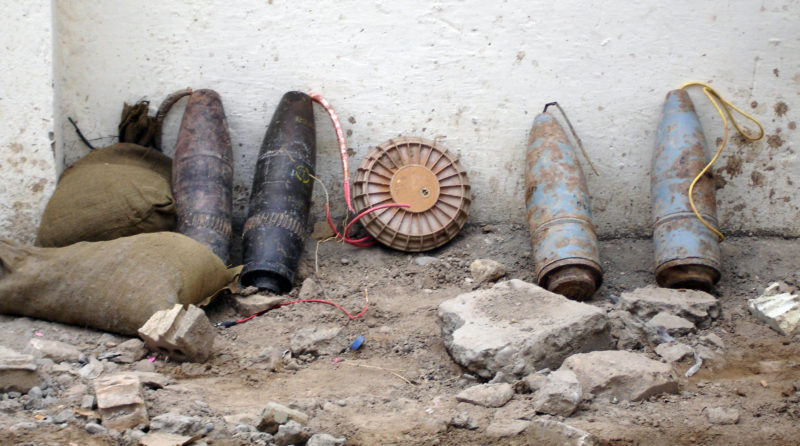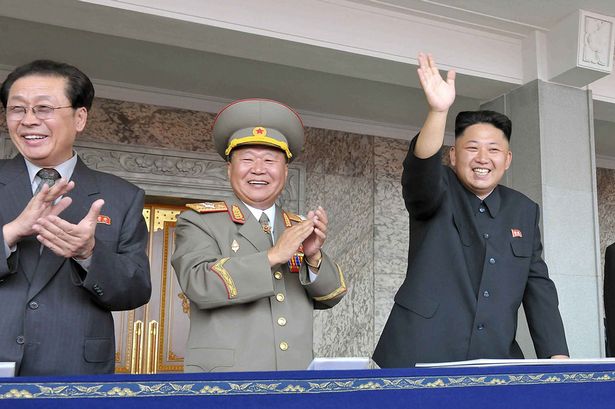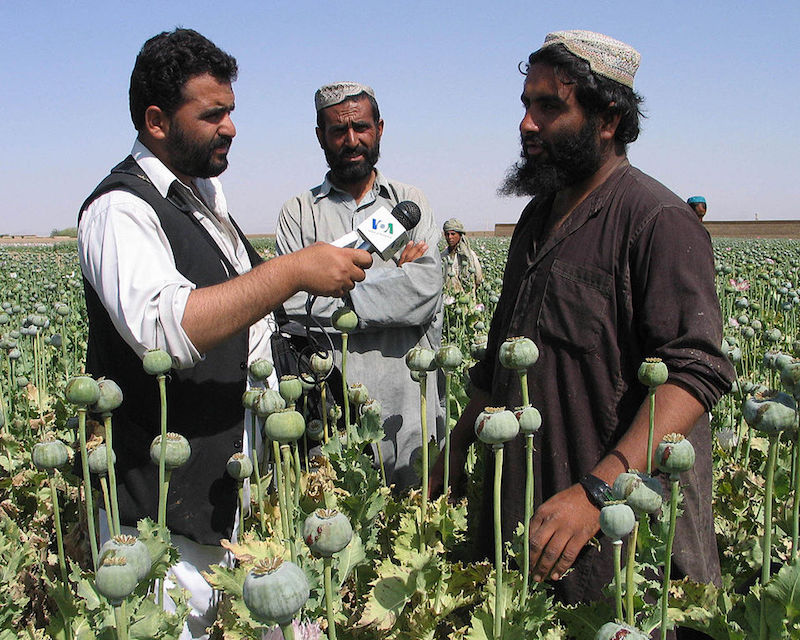The Islamic State has been severely weakened in recent months due to advances made by Iraqi forces, Shi’ite militias, Kurdish fighters, and the US-led coalition. Through gruelling battles over its strongholds, ISIS has not only suffered the loss of land and personnel, but it has also lost access to key sources of revenue and has simultaneously seen its online presence diminish. Still, the group’s advanced weapons capability makes it a constant threat to those who do not subscribe to its apocalyptic worldview. In order to neutralize the military threat posed by ISIS, it is first necessary to investigate its weapons capability and the sources of its weaponry.
Since its rebranding in 2013 and its campaigns to control major cities in Iraq and Syria the following year, ISIS has acquired a diversified arsenal of weapons. The group acquired these weapons by defeating US-armed Iraqi and Kurdish forces, stealing chemical weapons from dictators’ stockpiles in the region, trafficking materiel into ISIS-controlled territory, and developing its own weapons production factories. These methods of acquiring weapons allowed ISIS not only to use arms similar to those used by other terrorist groups, but also to manufacture military grade munitions that rival those of nation-states.

Like many other non-state armed groups before it, ISIS has a preference for assault rifles, and its militants’ preferred weapon has been the AK-47. During its early periods of operation, the group used concealable and transportable weapons, such as shoulder-fired missiles, likely because its members were conducting stealth operations to gain control of territory in a relatively short period of time. ISIS seized most of Anbar Province in January 2014 and proceeded to seize control of Mosul, forcing government troops to abandon the city. As the group continued to expand its territory in northern and western Iraq as well as in Syria, it gained control of the weapons and military vehicles left behind by Iraqi and Syrian forces and rebels. Among these were: approximately 55 Soviet-era tanks, six Soviet BRDM-2 amphibious armoured vehicles, two Soviet MT-LB amphibious auxiliary armoured vehicles, 20 Soviet BMP-1 infantry fighting vehicles, three Soviet 2S1 Gvozdika self-propelled artillery, a fleet of US-built Humvees, B-10 and M40 recoilless rifles, RPG-7s, and a variety of multiple-rocket launchers, howitzers, field guns, anti-aircraft guns, man-portable air-defense systems, antitank missiles, and even Blackhawk helicopters and fighter jets.

ISIS also established complex trafficking routes that allow illicit arms and ammunition to enter the country. The group purchased weapons from military personnel, gunrunners and other militant groups in Turkey, Qatar, Lebanon, Syria, Iraq, Saudi Arabia, and Jordan, all of whom help the group bring the weapons into the country undetected. Turkey serves as a key international transit point, and reports indicate that weapons from Croatia have entered ISIS-controlled territory through its Turkish border. ISIS’ black market activity, however, has primarily focused on ammunition. An investigation conducted by the UK-based Conflict Armament Research organization determined that ISIS uses ammunition originating from 21 countries, of which most were manufactured in China, the Soviet Union/Russian Federation, and the US. Ammunition from Serbia, Sudan, North Korea, Hungary, and Kyrgyzstan has also been found in ISIS territory, indicating that the group’s network structure and transnational trafficking channels allow it to receive arms and supplies from a variety of global sources. Furthermore, Iranian-manufactured ammunition was found in ISIS’ weapons caches, potentially violating a 2006 United Nations Security Council Resolution prohibiting Iran from exporting ammunition.
ISIS’ weapons capability surpasses that of other jihadist terrorist groups not only because of its seizure of military grade weapons, but also its adeptness in manufacturing its own armaments. In November 2016, investigation teams in recently  liberated areas of Mosul uncovered six ISIS factories in which rockets, shells, and mortars were manufactured. According to the team’s report, “The degree of organization, quality control, and inventory management indicates a complex, centrally controlled industrial production system.” The standardized practices adopted by the group resemble those of conventional militaries and have allowed it to produce tens of thousands of rockets and mortars, demonstrating that the Islamic State’s weapons production capacity may indeed be similar to that of a nation-state.
liberated areas of Mosul uncovered six ISIS factories in which rockets, shells, and mortars were manufactured. According to the team’s report, “The degree of organization, quality control, and inventory management indicates a complex, centrally controlled industrial production system.” The standardized practices adopted by the group resemble those of conventional militaries and have allowed it to produce tens of thousands of rockets and mortars, demonstrating that the Islamic State’s weapons production capacity may indeed be similar to that of a nation-state.
With multiple sources of weapons and ammunition, one may ask what can be done to degrade ISIS’ weapons capability. Firstly, Iraqi, Shi’ite, Kurdish, and allied forces must continue the push to regain territory in Iraq and Syria, as ISIS militants will be forced to leave weapons manufacturing plants and larger weapons behind. Secondly, Syria’s borders with Iraq and neighbouring countries must be fortified. The border between Turkey and Syria is of particular importance, as weapons and chemical warfare agents have been smuggled into Syria through its northern border. States around the world must also enhance oversight mechanisms to ensure that gunrunners and rogue military personnel are not exporting weapons and ammunition.
Amnesty International has attributed ISIS’ vast arsenal of weapons to poor regulation and a lack of oversight of arms imports, irresponsible arms transfers, and lax controls over military stockpiles. In light of these points, coalition forces must be careful in selecting which militias they arm in the fight against ISIS and the extent to which they are arming them. Mechanisms must be put in place to keep the Iraqi military armed and in control of weapons stockpiles, while non-state groups are disarmed. However, disarming ISIS, as well as Iraq and Syria in general, is no easy order; with increased regional insecurity, the problem of weapons proliferation in Iraq and Syria will likely get worse before it gets better.
Cover Photo: Improvised Explosive Device Discovered by Iraqi Police (2005), by U.S. Military/Department of Defense via Wikimedia. Listed under Public Domain.
In-text Photo 1: Iraqi Soldiers in MT-LB Multipurpose Armoured Vehicle (2005), by SSgt Suzanne M. Day via Wikimedia. Listed under Public Domain.
In-text Photo 2: M-1117 Armoured Security Vehicle (2007), by SPC Micah E. Clare via Wikimedia. Listed under Public Domain.
In-text Photo 3: A Close Up of a Weapons Cache (2005), by U.S. Marine Corps Capt. Howard G. Mariott via Wikimedia. Listed under Public Domain.
Disclaimer: Any views or opinions expressed in articles are solely those of the authors and do not necessarily represent the views of the NATO Association of Canada.




